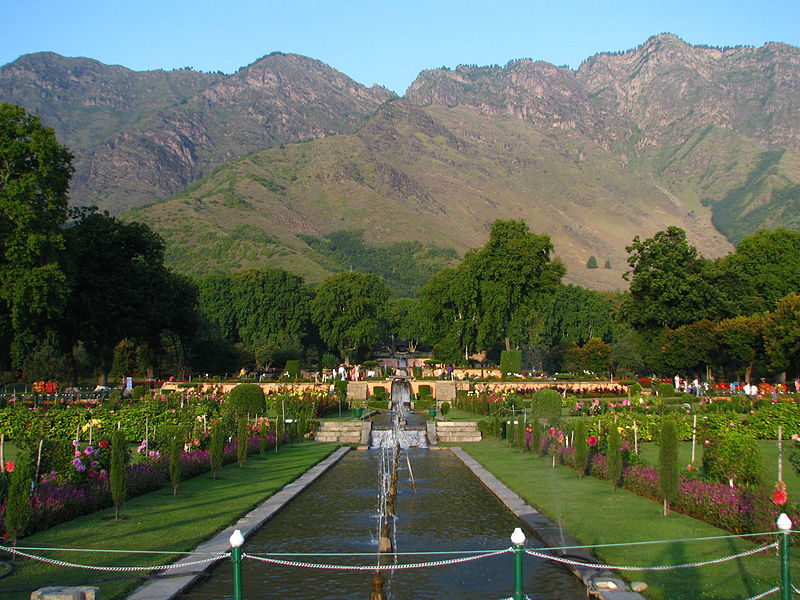No explanation needed: Kashmir
The famous Vale of Kashmir is the perhaps the best example on Earth, certainly in Western imagination, of an exotic and fertile valley surrounded by mountains. Below are some pictures of Srinagar and Dal Lake in summer and winter, with mountains in the background (sourced from Wikipedia).
The valley floor is about 1500 meters, and outside of the tropics. The much higher mountains to the north protect from the cold, so winter temperature get down to about freezing, but not much lower. Summer temperatures are mitigatemitigated by the altitiudealtitude, topping out at about 30 C for the summer average (compared to 40 C plus in tehthe sweltering plains below).
The valley is completely surrounded by mountains on all sides, with peaks over 4000 meters in all directions. The highest nearby peak is Nanga Parbat, about 100 km north of the valley. Despite its high surroundings, Kashmir sees moderate rainfall all throughout the year, including snow in the winter. It gets about 75% of the rainfall of areas with similar climates, such as Milan or Philadelphia; but about 30% more rain than the similar Xi'an in China.
Altogether, Kashmir sounds exactly like what you are describing.


